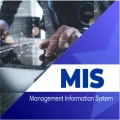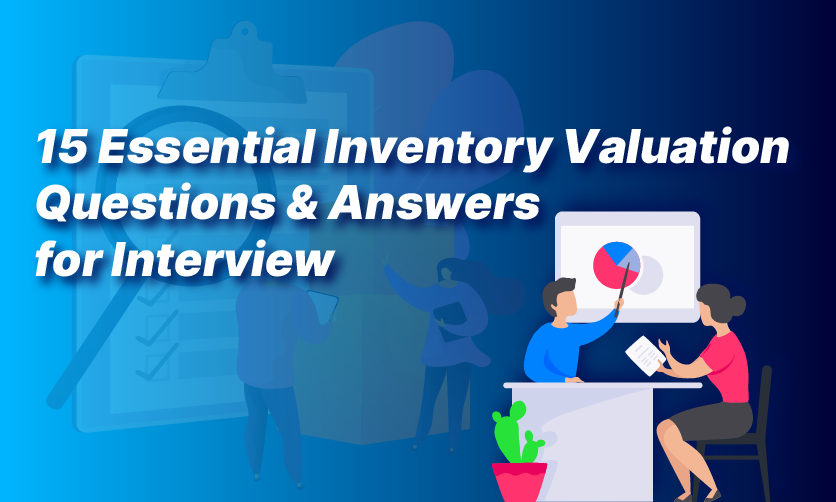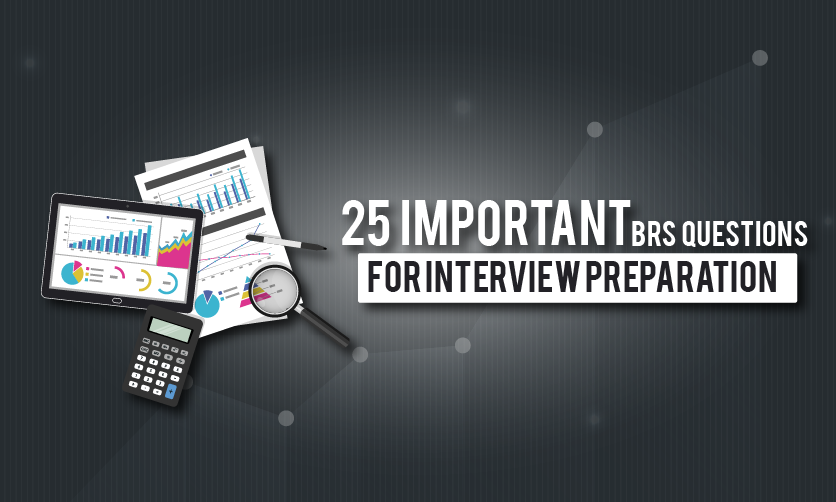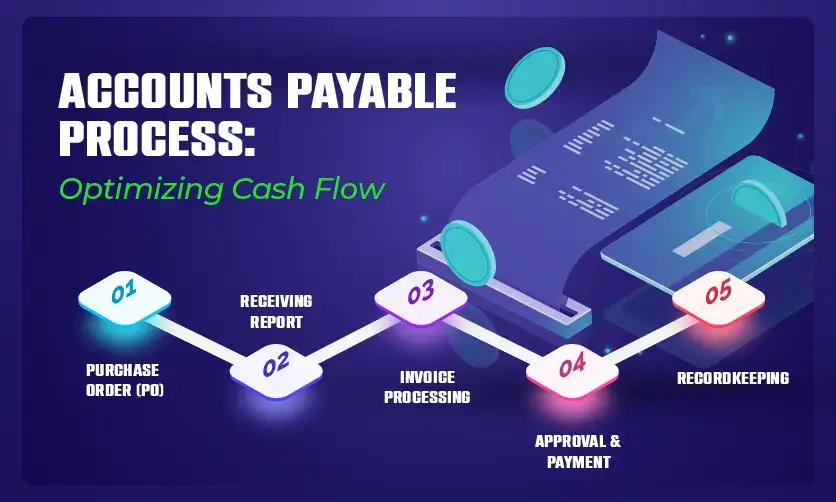
Accounts Payable Process: Optimizing Cash Flow
Every business, from a small-scale startup to a large industry, works with the accounts payable process to manage its financial buzz. Confused with the simple terminology of accounts payable? It simply refers to the money a company has to pay to their vendors and suppliers for goods and services received on credit.
The accounts Payable process plays an important role in managing a company’s financial health
While it looks like a simple process, managing it effectively is sometimes challenging for businesses.
We are here to explain the phenomena behind the AP process, including the challenges and benefits. Let’s first understand the basic terms of Accounts Payable.
Table of Contents
What is Accounts Payable?
Accounts Payable can be defined as the money, the companies have to pay to vendors and suppliers for purchases made on credit. These debts are typically due within a defined period, often 30 or 60 days, after the purchase date and act as short-term obligations. For every business, managing this burden effectively is crucial for navigating the financial ecosystem.
I hope that you have an idea about the basic definition of the Accounts Payable process. Now you can see in the next section that managing the AP process properly is quite important for smooth financial operations.

Why are Accounts Payable and Their Management Important?
The accounts payable process ends with bill payments but also offers many benefits for a business if managed efficiently. Every business controls the complete AP process carefully so that no lags persists. Let’s dive into the importance of the AP process:
- Building Strong Vendor Relationships:
Paying timely to your suppliers not only helps in building a strong relationship with them but also boosts your brand reputation. This allows you to get even more benefits in terms of better pricing, favorable credit terms, and potential discounts on future purchases. - Optimizing Cash Flow Management:
By strategically aligning due payments with incoming revenue, businesses can optimize the cash flow process. This basic phenomenon of the accounts payable process helps businesses avoid cash flow shortages and make sure that enough funds are available for other operations. - Ensuring Accurate Financial Reporting:
Every penny matters to accurately manage business finance. To ensure accurate financial reporting, the AP process tracks and keeps records of each financial statement. These statements play a major role in attracting investors, and following regulatory requirements. Even by analyzing reports, you can make better financial decisions. - Minimizing Operational Costs:
On-time payments of suppliers’ bills sometimes offer extra benefits in terms of discounts on the overall cost of goods and services purchased. This reduces the overall operational costs for businesses. Maybe the amount reduced is not so high, but, it will add up over time and give you some sort of profit. - Maintaining Regulatory Compliance:
The last and most important part of accounts payable management is achieved by following tax and financial regulations. This part of the accounts payable process keeps your business safe from legal penalties
Few related topics for your knowledge
In the next section, we will discuss the steps involved in the accounts payable process.
Accounts Payable Process
To manage your accounts payable process smoothly, experts always recommend going step by step to maintain regulatory compliance. To make you aware of each step in detail, we have described below the AP process cycle:
Purchase Order (PO)
PO, which stands for a purchase order, is the first step of the account’s payable process. This formal document is sent to the vendor, stating the specific goods or services needed, their prices, and the expected delivery date.
This document is prepared with the aim of maintaining all records associated with the ordered items, including the payment terms. This step of the AP process ensures both parties agree on single terms for working together.
Receiving Report (Received Goods)
Once the order is received from the supplier, a receiving report is generated. This document contains information like the quantity of the order received and even ensures the quality, and accuracy of the delivered items or services.
Invoice Processing
In this stage of the accounts payable process, the vendor sends an invoice mentioning the payable amount for the goods and services supplied to us. The accounts department cross-checks the invoice with the purchase order and receiving reports. The motive behind checking is to ensure accuracy and avoid any discrepancies, such as incorrect quantities or pricing.
Approval and Payment
The process starts, once the invoice is verified, followed by payment processing by authorized personnel through cheque or electronic transfers and finally the vendor receives the payment.
The accounts department ensures that payments are completed under the specified guidelines of the companies and monitoring authorities.
Recordkeeping
The last step of the AP process is maintaining all the records, from PO to invoice payment, and other details throughout the process. This process involves documenting every transaction, storing invoices, and purchase orders, receiving reports, and ensuring accurate financial reporting.
If you have read each step of the accounts payable process carefully, now you are capable of analyzing how the finances of any company are managed in terms of the AP process.
Learning and upgrading knowledge and skills is always a good choice for students and professionals for career growth. To help you with this, we have designed the accounting course under expert supervision. Explore the courses here:
Documents associated with the Accounts Payable processes
Following is the list of documents associated with the accounts payable process:
- Purchase order (PO): The first document of the AP process that contains the purchase details.
- Receiving report: This document is generated after the PO when goods are received against the purchase order.
- Invoice: Bill from the vendor detailing the amount owed for the purchase.
- Payment authorization: This document approves the invoice and authorizes payment.
- Payment documentation: Records the payment transaction and its details.
Challenges in the Accounts Payable Process
There are a few challenges that, companies can face while working with the manual AP process. Let’s check out each one by one for better understanding:
- Manual Data Entry: The traditional process requires manual data entry each time an order is placed. This increases the chance of error and affects the accuracy of financial reports. Even though the process consumes lots of time and negatively impacts efficiency, accuracy, and overall process speed.
- Lack of Visibility: The paper-based systems do not allow real-time data visibility, which makes the whole process inefficient. Due to a lack of transparency, companies are not able to track real-time insights at any level to check discrepancies or faults.
- Fraudulent Activities: Manual AP processes can increase the chance of fraud by generating duplicate payments or unauthorized invoices. All these frauds are not easy to track and ultimately lead to financial losses and damage to vendor relationships.
- Inefficient Workflows: Each step is performed manually through paperwork, which slows down the process and results in payment delays. Timely payments become an obstacle, potentially leading to strained relations and missed early payment discounts.
If you are interested in reading more account-related articles, then visit here:
Now, it’s time to upgrade and automate each task for better efficiency, productivity, and accuracy. This can simply be achieved by automation in the Accounts Payable process. Let’s explore automation in AP in the next section of the article.
Automation in Accounts Payable
To overcome the challenges of the manual AP process, companies started adopting technology-driven Accounts Payable Automation (APA) solutions. This solution offers many benefits by automating various tasks within the AP process for a more efficient and reliable system.
- Enhanced Efficiency
Automating different tasks, from data entry to approvals, reduces processing time and increases overall efficiency. Many repetitive tasks are now handled automatically, which reduces manual labour, save time and allows you to focus on strategic planning, vendor management, and relationship building. - Unwavering Accuracy
The error rate also decreases with improved data consistency. With the introduction of automation and validation tools in the AP process, accurate data is recorded with reliable financial reporting. Thus, it builds more trust with vendors and eliminates discrepancies which leads to disputes or penalties. - Cost Reduction Benefits
The automated accounts payable process reduces manual work, and the cost of manual work processing is also reduced. Further, other steps can also optimized that contribute to cost savings. The cost saved from these processes can be utilized for other business operations to earn more profits. - Transparency and Visibility
APA solutions increase the feasibility of businesses accessing real-time insights into data and reports. This helps companies to monitor vendor performance and payments with greater visibility. Businesses can optimize the overall AP process by analyzing data-driven insights and making better decisions about their companies’ financial health. - Enhanced Security
The most difficult task for accounting professionals is to protect the data from fraud and unauthorized access. The automated accounts payable process resolves this issue with robust security features, safeguarding sensitive financial data and ensuring compliance with security regulations. - Streamlined Compliance: APA software automates various tasks like automatic tax calculations and pre-populated tax forms. All these solutions reduce errors and make the compliance process easy. With the involvement of automation in the AP process, the risk of penalties is reduced, and businesses work easily under a legal framework
To make yourself industry-ready, We will equip you with accounting, knowledge. To read many more concepts of accounting, visit here:
Accounts Payable Process With Example
- Scenario: ABC Corp, a small manufacturing company, orders 100 units of raw materials from XYZ Suppliers for $5,000, with payment terms of Net 30 (payment due within 30 days).
- Receive Invoice:
- XYZ Suppliers sends an invoice to ABC Corp on August 1, 2025, for $5,000, detailing the 100 units delivered, with a due date of August 31, 2025.
- Verify Invoice:
- ABC Corp’s AP team checks the invoice against the purchase order (PO #1234) and the delivery receipt confirming 100 units were received in good condition.
- The team verifies that the price per unit and total amount ($5,000) match the PO.
- Approve Invoice:
- The AP team sends the invoice to the procurement manager, who confirms the materials were received as ordered and approves the invoice for payment.
- Record Invoice:
- The AP team enters the invoice into their accounting software (e.g., QuickBooks), recording $5,000 as a liability under accounts payable, with details like invoice number (INV-456), vendor (XYZ Suppliers), and due date (August 31, 2025).
- Schedule Payment:
- ABC Corp decides to pay early to take advantage of a 2% discount offered for payments within 10 days (by August 11, 2025).
- The discounted amount is $4,900 ($5,000 – 2%).
- Make Payment:
- On August 10, 2025, the AP team processes a $4,900 payment via ACH to XYZ Suppliers’ bank account.
- The accounting system is updated to reflect the payment, reducing the AP balance.
- Reconcile and Archive:
- The AP team confirms the $4,900 payment in the bank statement during monthly reconciliation.
- The invoice, PO, delivery receipt, and payment confirmation are archived digitally for audit purposes.
Accounts Payable Process FlowChart
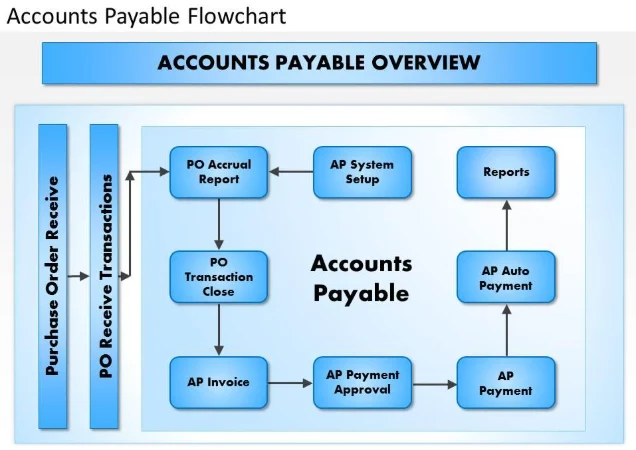
FAQ(Frequently Asked Questions)
1. What Is The Accounts Payable Process In SAP, And How Does It Integrate With Other Modules?
Answer: The SAP Accounts Payable (FI-AP) process is a submodule of SAP Financial Accounting (FI) that manages vendor transactions, including invoice processing, payments, and vendor master data. It handles invoice receipt, verification, approval, and payment while updating the General Ledger (GL) in real-time. FI-AP integrates with Materials Management (MM) for purchase order and goods receipt matching and with Cash Management for liquidity planning. This ensures seamless data flow across procurement, invoicing, and financial reporting.
2. How Do You Create And Manage Vendor Master Data In SAP For Accounts Payable?
Answer: Vendor master data in SAP contains details like vendor name, address, payment terms, and reconciliation accounts. To create it, use transaction code XK01 or FK01. Steps include selecting an account group, defining number ranges, and entering general, company code, and purchasing data. The account group determines the fields displayed and ensures unique vendor IDs. This data is critical for invoice processing and payments.
3. What Is The Automatic Payment Program (APP) In SAP, And How Does It Work?
Answer: The Automatic Payment Program (APP) in SAP, accessed via transaction code F110, automates bulk payments to vendors. Users set parameters like payment methods, due dates, and vendor accounts. The system generates a payment proposal, which is reviewed and approved by the AP team. Once approved, payments are processed via methods like checks or bank transfers, updating the GL automatically.
4. How Does SAP Handle Invoice Verification And Three-way Matching In The AP Process?
Answer: SAP uses three-way matching to verify invoices by comparing them with purchase orders (POs) and goods receipts in the Materials Management (MM) module. Transaction code MIRO is used to enter and verify vendor invoices. If discrepancies (e.g., quantity or price mismatches) occur, the invoice is parked for resolution. This ensures accurate payments and reduces errors.
5. What Are Some Key Reports Available In SAP Accounts Payable For Tracking And Analysis?
Answer: SAP FI-AP offers reports like the Vendor Aging Report (to track overdue invoices), Vendor Line Item Display (T-code: FBL1N, showing vendor transaction details), and payment forecast reports for cash flow planning. These tools help monitor open items, analyze payment trends, and optimize vendor relationships by leveraging discounts and ensuring timely payments.
Conclusion
In today’s fast-moving business landscape, managing your AP process is no longer optional. By implementing the automatic AP system, businesses not only optimize their cash flow but also build a stronger vendor relationship. Even this helps you make improved financial decisions, and increase profitability.
Always remember, that consistent financial success can be achieved through a well-managed Accounts Payable process.
- Top 20 Journal Entries Questions And Answers For Interview - November 8, 2024
- Accounts Payable Process in SAP: Step by Step Guide - August 23, 2024
- Capital and Revenue Transactions: Understand the Basics - August 16, 2024

.jpg)



